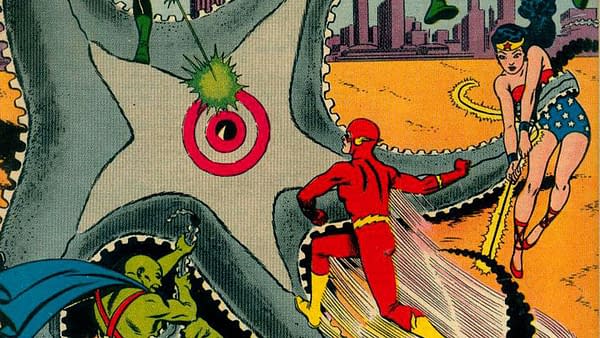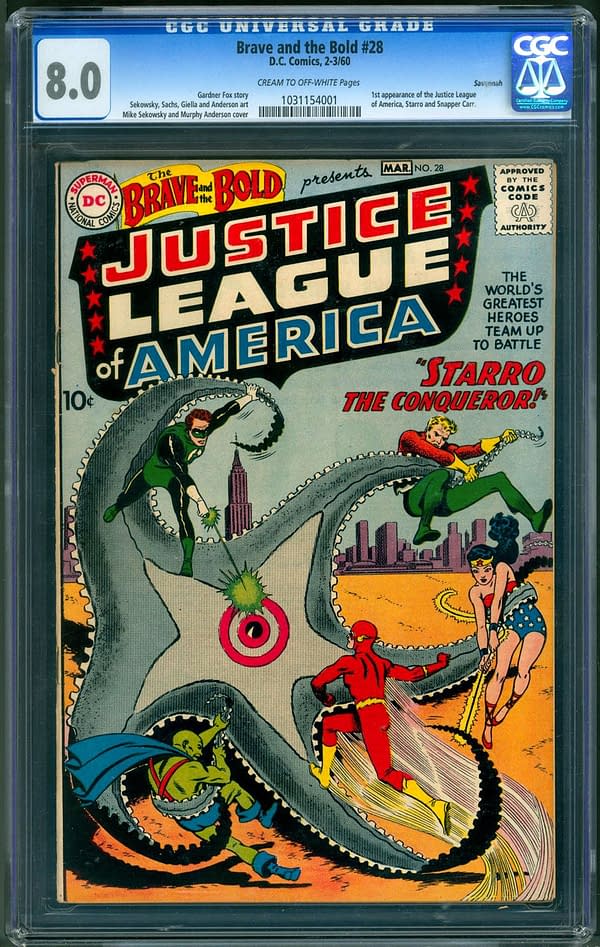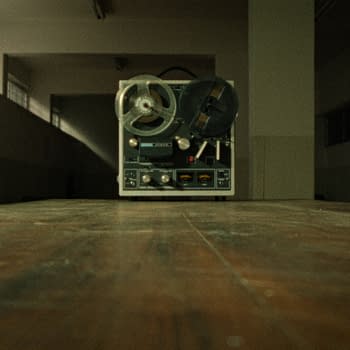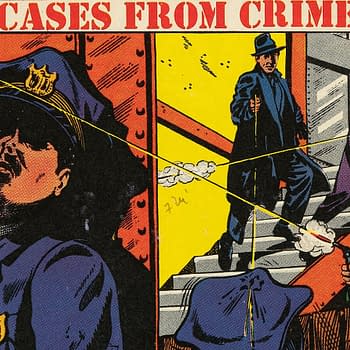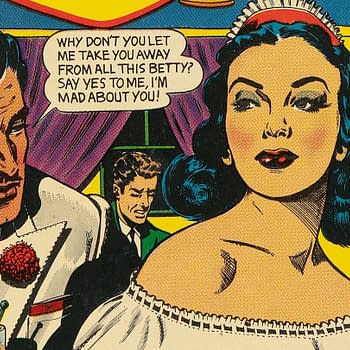Posted in: Comic Connect Sponsored, Vintage Paper | Tagged:
The Lovecraftian Origins of the Justice League of America
Justice League of America co-creator Gardner Fox was a well-known fan of HP Lovecraft, as well as a fan of other fiction from the pulp era during which he grew up. It's pretty well-known that the villain of The Brave and the Bold #28 (the first appearance of the Justice League of America), Starro the Conqueror, was inspired by the story Tarrano the Conquerer by Ray Cummings, and also by Lovecraft's Cthulhu Mythos. Sinister cosmic menaces and the other-worldly dimensions they came from made their way into their into Gardner Fox's DC Comics work quite often. Fox is also credited with creating the Multiverse concept in comics at DC in Flash #123 from 1961, for example.
Comic Connect has the Savannah Copy of The Brave and the Bold #28 CGC 8.0 up for auction this week, and it's the launch point for way more history than you might think.
As I noted when Comic Connect sold a Justice League #1 CGC 9.6 in June 2019, there's an interesting side-note to Fox's creation of the Multiverse: Ray Cummings, obviously an influence on Fox's work, himself adapted his seminal Girl in the Golden Atom story for Marvel/Timely in a two-part story called Princess of the Atom in Captain America #25 & 26. One can make a pretty convincing argument that Princess of the Atom is Marvel's first Microverse story, which makes it the key to the Quantum Realm concepts that are so important to the MCU today. Cummings, who had worked for Thomas Edison as a technical writer, was one of the most influential science fiction authors of the pulp era. Notably, Cummings also wrote a story about parallel worlds called Phantoms of Reality for Astounding Stories of Super-Science Volume 1 #1, cover-dated January 1930. A tale of similar-yet-different Earths separated by different "vibratory frequencies", it's the clear inspiration for Gardner Fox's story in Flash #123. It's easy to make the case that Cummings is the grandfather of both the Marvel and DC Multiverses. test.
But there's plenty of Lovecraft Country to be seen in The Brave and the Bold #28 even beyond Starro.
For example, let's take a look at one of the main locations depicted in this comic, which would have lasting importance in the DCU: Happy Harbor. A Rhode Island town of some size, Happy Harbor is established here as the home of the Justice League's original headquarters. It's a place where strange things often happen, and the home of some highly unusual people. And of course, it's a town with a harbor in Rhode Island.
Created by a writer who is very obviously a huge Lovecraft fan, this can only mean that Happy Harbor is the real city in Rhode Island that matches that description exactly, and by no coincidence, it was HP Lovecraft's home town. The Justice League of America's original home base was thus originally located in Providence by HPL fan Gardner Fox.
Let's elaborate on that actual base of operations now: it's described as a cavern in this issue, and is shortly thereafter named the "Secret Sanctum". Sometime later, it is described as a cavern secreted inside a mountain nearby Happy Harbor. This can definitively be identified as Jerimoth Hill, which is a few miles away from Providence.
As for the cavern itself, the saga of Randolph Carter in The Dream-Quest of Unknown Kadath comes readily to mind here. Carter discovers the "Cavern of Flame", which is described as a natural cavern "worked smooth" into a dwelling with chambers, and containing depictions of the Earth Gods. Only the worthy can enter, and once they do, they are given clothing, weapons, and any equipment and supplies needed for the further quest. That sounds quite a lot like a headquarters for Earth Gods — aka superheroes — to me.
This leaves us with the oddity of the character of Snapper Carr, who is introduced in this issue. The accepted history here is that the character was named by DC Comics Executive Editor Whitney Ellsworth, who had mandated the addition of a "hip teenager" to the Justice League storyline. But at least as far as the name goes, I doubt very much that this is true.
It's more likely that Gardner Fox named the character in homage to another of his favorite authors — detective fiction writer Jonathan Dickson Carr. Carr used the symbolism of snapping fingers as a method of emphasis very, very often throughout his body of work.
Gardner Fox would pay homage to HP Lovecraft and other pulp authors throughout his career in comics, but the shadowy origins of the Justice League of America might just be the most strange and unknown example of this in all of his comics work. The CGC 8.0 Savannah Copy of The Brave and the Bold #28 is up for auction right now at Comic Connect.



